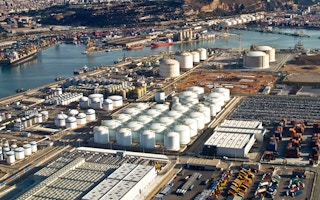BERLIN – As Europe’s debt crisis fades, another economic disaster seems to be looming – the price of energy. Since the early 2000’s, average electricity prices for Europe’s industries have more or less doubled, and European companies now pay twice as much for gas as their US competitors do. Are Europe’s highly ambitious climate policies – which seek to increase costs for “bad” energy sources – destroying the continent’s industrial base?
To continue reading, subscribe to Eco‑Business.
There's something for everyone. We offer a range of subscription plans.
- Access our stories and receive our Insights Weekly newsletter with the free EB Member plan.
- Unlock unlimited access to our content and archive with EB Circle.
- Publish your content with EB Premium.
At first glance, the numbers seem to support the doomsayers. How can such a huge price gap not have an impact on competitiveness? But if high energy prices lead to declining exports, how is it that Germany, which boasts some of the world’s most ambitious climate policies, has doubled its exports since 2000?
In fact, empirical evidence shows that in many cases, further reducing carbon-dioxide emissions might help to make industries more competitive. Exploring this potential could open up significant opportunities not only to combat climate change, but also to foster Europe’s long-term economic robustness.
Since 2005, when the European Union introduced its Emissions Trading System, German industry has achieved massive gains in market share, despite energy prices having risen much faster than in the US and elsewhere. According to OECD estimates, the relative export performance of high-cost Germany increased by 10% from 2005 to 2013, while US exports grew only 1.2% faster than demand in the rest of the world. In 2013, both German and US exports fell slightly in relative terms – hardly a sign of an energy-driven competitiveness divide.
The same holds true, though at a more modest level, even for energy-intensive industries, like chemicals. Despite already-high and rising energy prices, Europe’s chemical industry has grown at about the same rate as the rest of the economy since 1995. Today, EU chemical companies specialize in high-value products, and Europe exports much more of them than it imports.
The reason is simple: there is more – much more – to competitiveness than energy prices. Indeed, estimates for Germany show that for most of its industrial base, energy costs account for a mere 1.6% of gross value added. Thus, even rapidly rising energy prices imply only a limited additional cost burden for firms.
“
It would certainly not be wise to allow Europe’s energy bill to explode in the name of ambitious climate policies. There are smarter ways to reduce emissions than just raising costs for industry and consumers. But it would be equally senseless to push for less ambitious policies, thereby stalling progress in the fight against climate change, without being sure that doing so would improve European competitiveness
Of course, this burden is higher for industries such as chemicals. But energy-intensive industries usually benefit from exemptions on carbon charges. And, even in these sectors, competitiveness must be defined in a much broader sense than that given simply by comparing cost statistics. For example, factors like highly qualified labor, or the benefits of being integrated into well-functioning clusters, probably play a more important role.
Clearly, such considerations provide no guarantee that rising energy prices will not at some point seriously challenge European competitiveness. Indeed, new investment in chemical plants has grown only slowly for years now.
But, while this risk must be taken seriously, history suggests that there may well be a way out that does not require rolling back climate policies. What is notable is that rising energy prices have been accompanied not only by relatively robust competitiveness, but also by huge reductions in CO2 emissions. Europe’s chemical industry has halved its greenhouse-gas emissions compared to 1990, while increasing output by 20%. This suggests that rapidly reducing emissions may sometimes even help to maintain a firm’s competitiveness.
In a pilot study on specific chemical products for the European Climate Foundation, experts from McKinsey identified the potential for a further 50 to 75% reduction in CO2 emissions. Moreover, in an estimated 60 to 70% of cases, exploring the additional abatement opportunity would have no effect – or would even strengthen – the industry’s competitiveness. This is because greater reliance on recycling, for example, reduces costs – and thus enhances companies’ competitiveness – while reducing emissions and driving new approaches like cross-sector innovation.
It would certainly not be wise to allow Europe’s energy bill to explode in the name of ambitious climate policies. There are smarter ways to reduce emissions than just raising costs for industry and consumers. But it would be equally senseless to push for less ambitious policies, thereby stalling progress in the fight against climate change, without being sure that doing so would improve European competitiveness.
The new paradigm should focus on finding ways to reduce CO2 emissions in ways that ultimately help to produce better products at lower cost. This will also help European producers capture new markets in emerging countries, which will increasingly demand the high-value chemical products that Europe already produces competitively.
The last thing a crisis-weary Europe needs is a new competitiveness gap. But ambitious climate targets, as Germany and other successful European economies have shown, are not the problem. They could even be part of the solution.
Thomas Fricke is Chief Economist of the European Climate Foundation and runs the German internet Web site WirtschaftsWunder. This post originally appeared in Project Syndicate.








